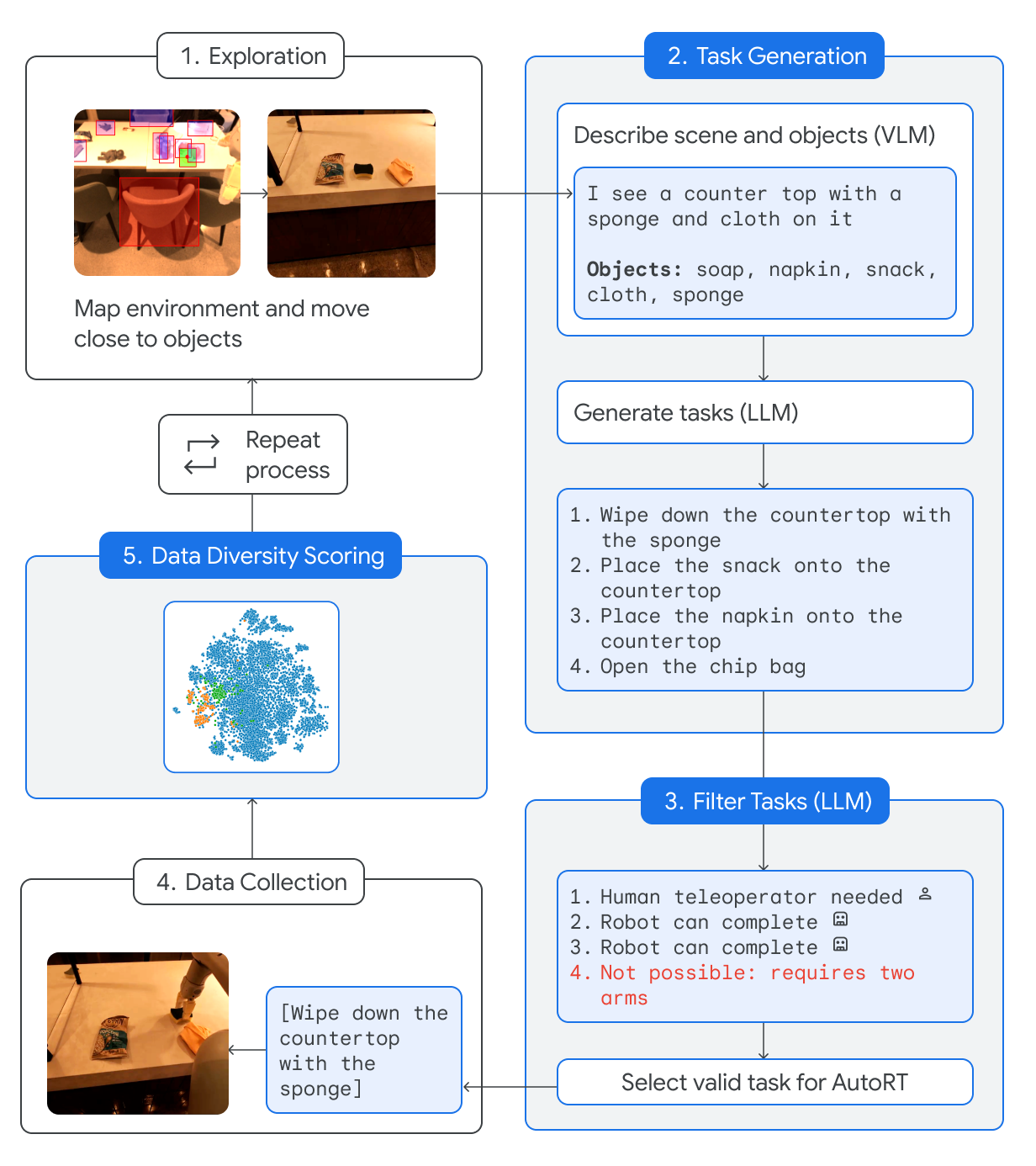 Implementation of AutoRT: "AutoRT: Embodied Foundation Models for Large Scale Orchestration of Robotic Agents". This repo will implement the multi agent system that transforms a scene into a list of ranked and priortized tasks for an robotic action model to execute. This is an very effective setup that I personally believe is the future for swarming robotic foundation models!
Implementation of AutoRT: "AutoRT: Embodied Foundation Models for Large Scale Orchestration of Robotic Agents". This repo will implement the multi agent system that transforms a scene into a list of ranked and priortized tasks for an robotic action model to execute. This is an very effective setup that I personally believe is the future for swarming robotic foundation models!
This project will be implemented using Swarms, for the various llms and use the official RT-1 as the robotic action model.
$ pip3 install autort-swarms
- Load your environment variables:
from dotenv import load_dotenv
load_dotenv()- Instantiate the AutoRT class:
from autort import AutoRT
# Load API keys from environment
openai_api_key = os.getenv("OPENAI_API_KEY")
gemini_api_key = os.getenv("GEMINI_API_KEY")
# Instantiate AutoRT with the necessary API keys
autort_system = AutoRT(openai_api_key)With AutoRT set up, you can now run the system by providing it with text and image inputs:
text_input = "There is a bottle on the table."
image_url = "https://i.imgur.com/2qY9f8U.png"
# Run the AutoRT system
result = autort_system.run(text_input, image_url)AutoRT allows for extensive customization of its components. Here’s how you can do it:
AutoRT uses predefined prompts to guide the language models. To customize these prompts:
from autort.prompts import FUSED_SYSTEM_PROMPT_WITH_SOP
custom_visualization_prompt = "Custom SOP for visualizing objects."
autort_system.system_prompt_vllm = FUSED_SYSTEM_PROMPT_WITH_SOP(
guidance=autort_system.guidance_vllm,
sop=custom_visualization_prompt,
)You can alter the guidance for task generation to focus on specific types of tasks:
custom_task_generation_guidance = "Generate cleaning tasks for the robot."
autort_system.guidance_llm = custom_task_generation_guidanceTo modify the criteria for task ranking:
custom_ranking_guidance = "Rank tasks based on safety and duration."
autort_system.guidance_rank = custom_ranking_guidanceAutoRT can be tailored to work with different robot models by providing a custom callable:
def custom_robot_model(task_descriptions, image):
# Custom logic to execute tasks
pass
autort_system.robot_model = custom_robot_modelAfter customization, invoke the run method with the new parameters:
# Run the customized AutoRT system
custom_result = autort_system.run(text_input, image_url)AutoRT offers a flexible and powerful interface to bridge the gap between AI language understanding and robotic task execution. By customizing its components, you can tailor the system to a wide range of applications, from domestic robots to industrial automation systems. With this tutorial, you're now equipped to implement and customize AutoRT for your specific needs.
@inproceedings{
anonymous2023autort,
title={Auto{RT}: Embodied Foundation Models for Large Scale Orchestration of Robotic Agents},
author={Anonymous},
booktitle={Submitted to The Twelfth International Conference on Learning Representations},
year={2023},
url={https://openreview.net/forum?id=xVlcbh0poD},
note={under review}
}
MIT
